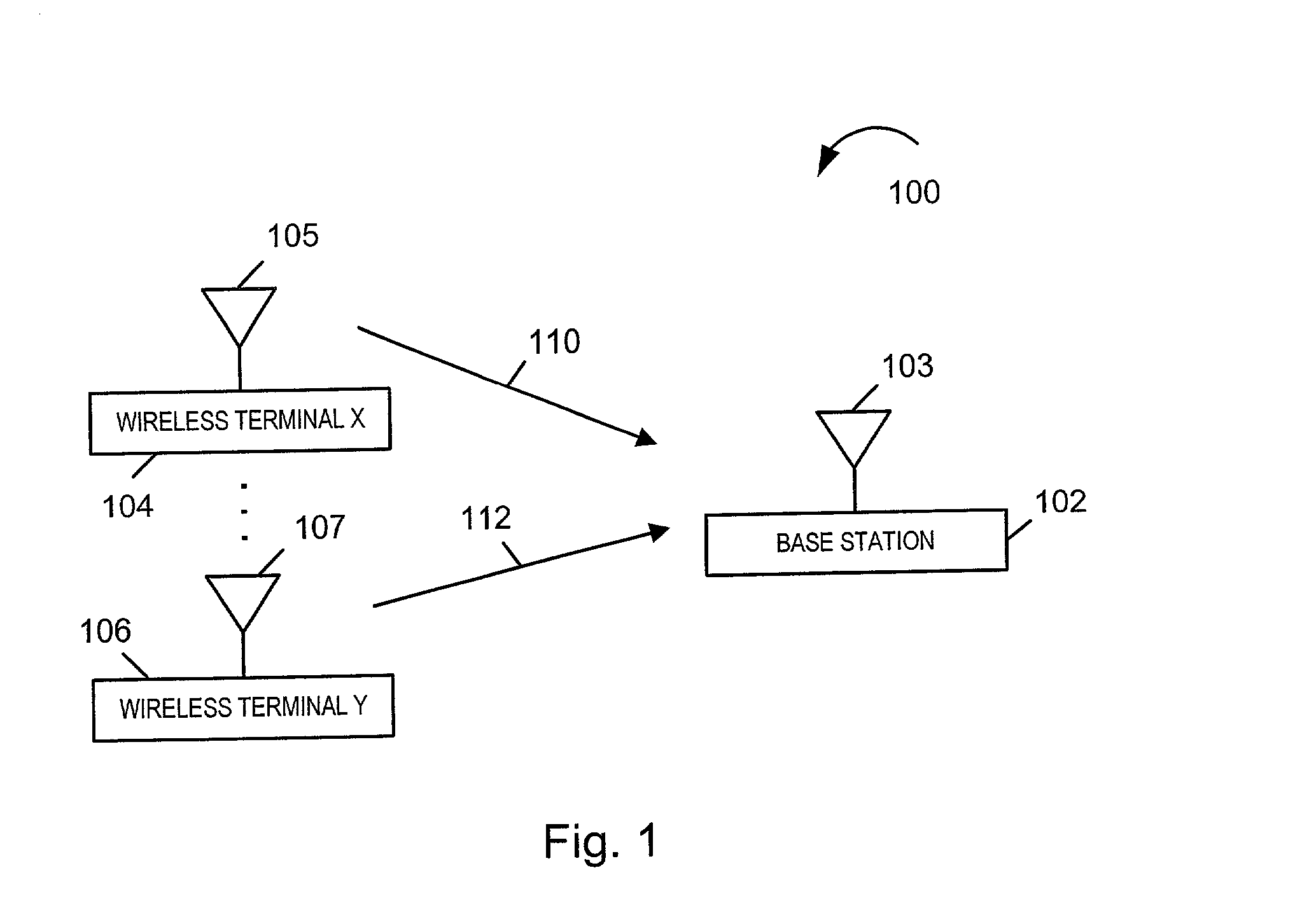Method of symbol timing synchronization in communication systems
- Summary
- Abstract
- Description
- Claims
- Application Information
AI Technical Summary
Benefits of technology
Problems solved by technology
Method used
Image
Examples
Embodiment Construction
[0030] The present invention is applicable to a wide range of digital communications systems, point-to-point or multiple access, where a first communication device communicates with a second communication device.
[0031] FIG. 1 shows an exemplary OFDM multiple access system 100 in which several first communication devices, that is, wireless terminals 104, 106, e.g., mobile stations, transmit OFDM signals 110, 112 to a second communication device, that is a single base station 102, simultaneously. Signals 110, 112 each include one or more symbols, e.g., OFDM symbols. The wireless terminals 104, 106 include antennas 105, 107 for the transmission of signals 110, 112. Base station 102 includes antenna 103 for receiving the transmitted signals 110, 112.
[0032] In the exemplary system 100, OFDM symbols comprise two parts, a cyclic prefix and an FFT body. FIG. 9 illustrates an example of such an OFDM symbol 900 which includes a total of N samples. The cyclic prefix 902 includes K samples whil...
PUM
 Login to View More
Login to View More Abstract
Description
Claims
Application Information
 Login to View More
Login to View More - R&D
- Intellectual Property
- Life Sciences
- Materials
- Tech Scout
- Unparalleled Data Quality
- Higher Quality Content
- 60% Fewer Hallucinations
Browse by: Latest US Patents, China's latest patents, Technical Efficacy Thesaurus, Application Domain, Technology Topic, Popular Technical Reports.
© 2025 PatSnap. All rights reserved.Legal|Privacy policy|Modern Slavery Act Transparency Statement|Sitemap|About US| Contact US: help@patsnap.com



